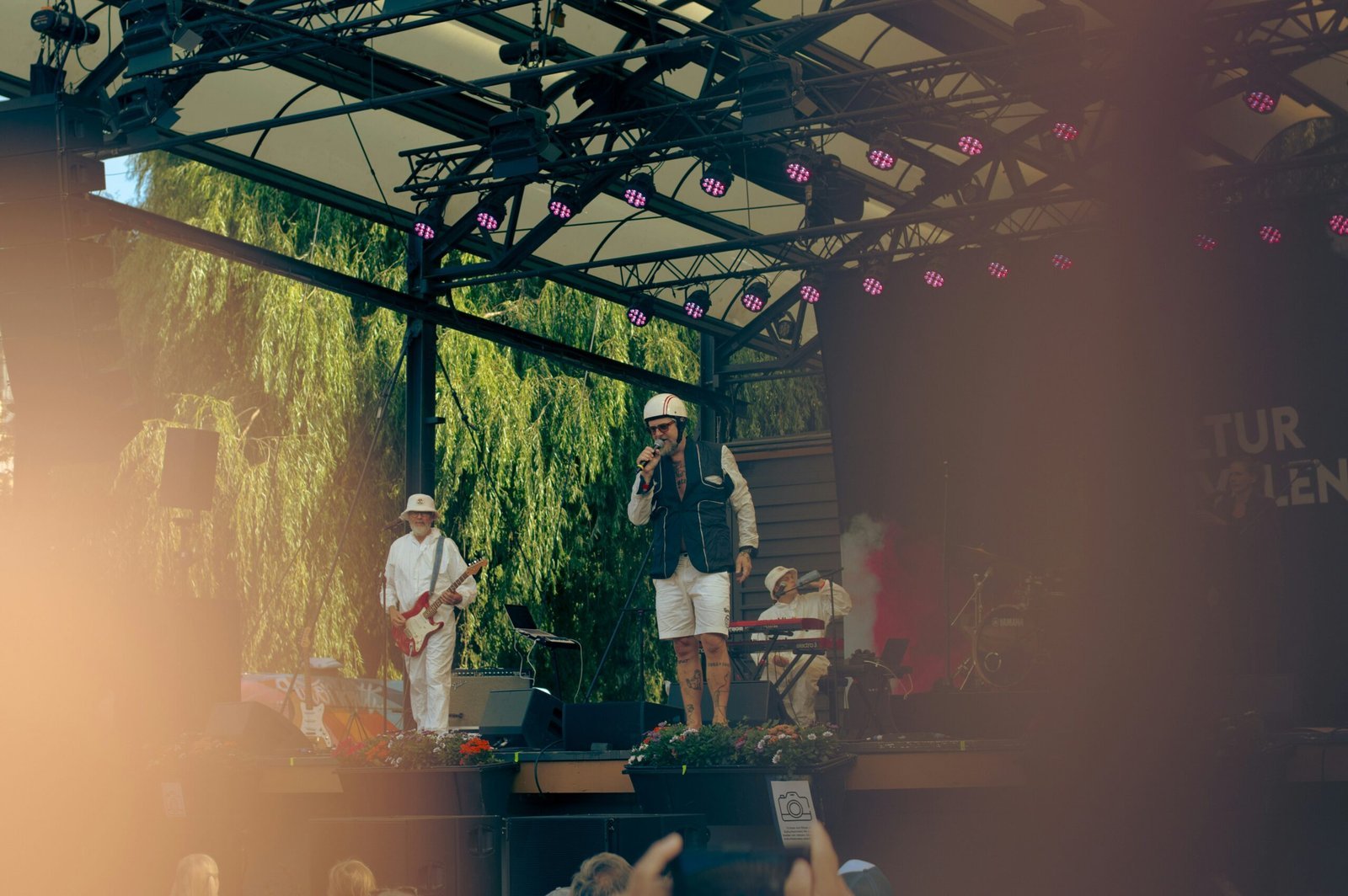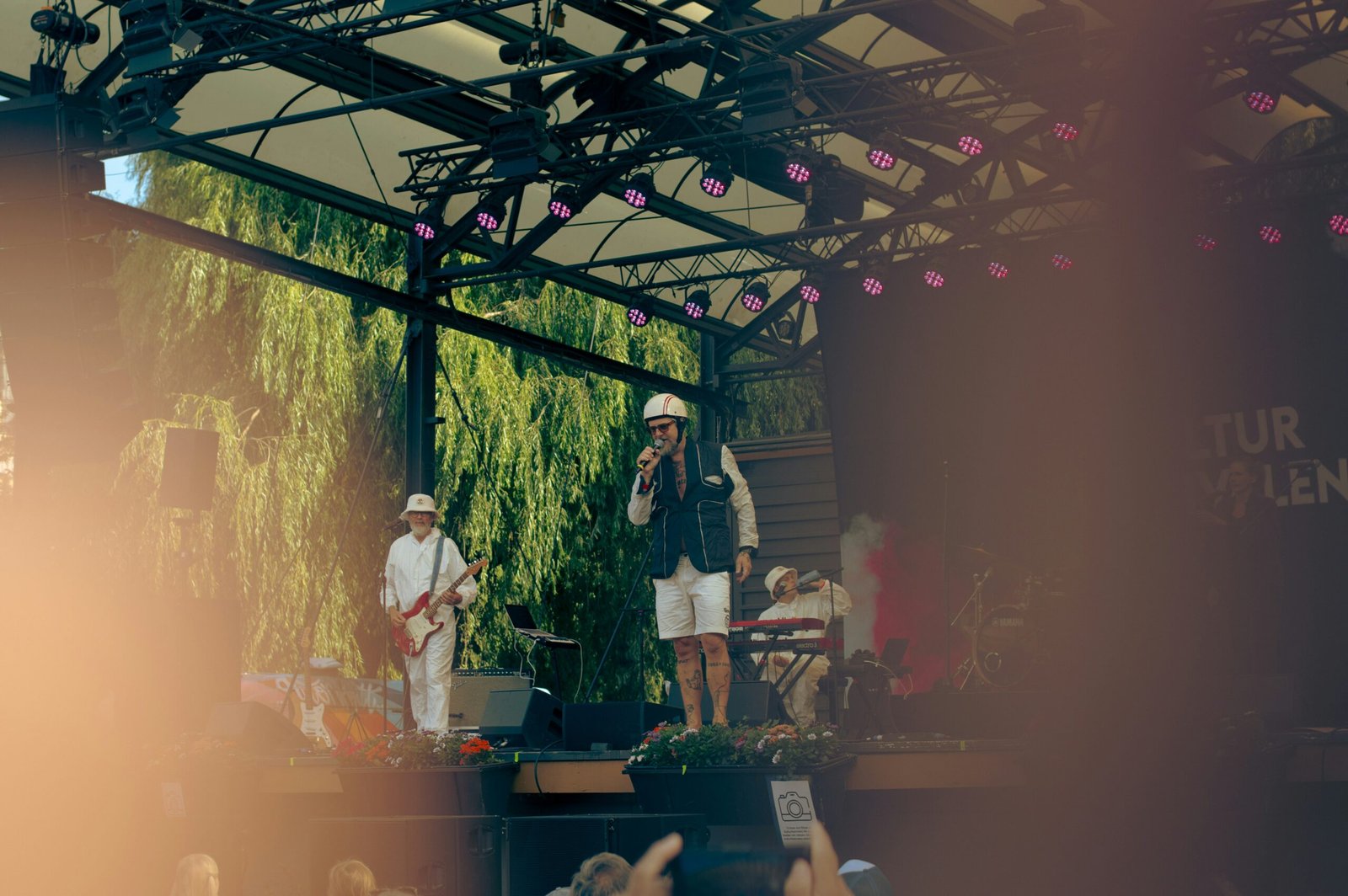
Introduction to East Timor’s Rich Cultural Heritage
East Timor, an island nation located in Southeast Asia, boasts a rich cultural tapestry woven from its diverse ethnic groups, historical events, and colonial legacies. With a population primarily composed of the Tetum and Malay ethnicities, alongside various indigenous communities, East Timor presents a unique blend of traditions and customs that reflect its complex history. The country gained independence from Indonesia in 2002, a significant milestone that has fostered a renewed sense of national identity and pride among its citizens.
The influence of Portuguese colonialism, which lasted for nearly four centuries, is evident in various aspects of East Timorese culture, including language, religion, and agricultural practices. The prevalence of Catholicism, introduced by Portuguese missionaries, plays a fundamental role in shaping social customs and community events. Furthermore, vestiges of traditional animistic beliefs continue to coexist with these colonial influences, adding layers to the local cultural identity.
Understanding the importance of cultural preservation, East Timor is home to numerous festivals and celebrations that showcase its traditional art forms, music, and dance. The tribal cultural festival, in particular, serves as a vital platform for showcasing East Timor’s rich heritage, bringing together various communities to celebrate their unique customs. Such events play an essential role in reinforcing community bonds and fostering pride in cultural heritage, while also educating both locals and visitors about the significance of these practices.
The interplay of history, identity, and tradition in East Timor provides a compelling context for the appreciation of its cultural festivals. These gatherings not only celebrate artistic expression but also serve to strengthen the social fabric of communities, ensuring that the diverse legacies and practices are passed down through generations.
The Significance of Tribal Cultural Festivals
Tribal cultural festivals play a crucial role in preserving the rich traditions and cultural identity of communities, particularly in regions such as East Timor. These events offer a vibrant platform where various rituals, dances, and festivities are showcased, embodying the history and values of the tribal societies. Through these performances, participants and attendees collectively celebrate their shared heritage, reinforcing communal bonds and fostering a sense of belonging among members of the community.
The rituals performed during these festivals are often steeped in meaning, symbolizing a deep connection to the ancestors and the natural world. Traditional dances, for instance, serve not only as a form of entertainment but also as a means of storytelling. Each movement and gesture are imbued with significance, conveying historical narratives and reflecting the communal values that have been passed down through generations. By engaging in these practices, community members not only affirm their identity but also ensure the continuity of their cultural heritage.
Moreover, tribal cultural festivals play an essential role in educating younger generations about their history and traditions. As elder community members share stories and demonstrate traditional practices, they pass down vital knowledge that strengthens cultural pride. This intergenerational exchange is pivotal in cultivating an appreciation for one’s roots and identity, enabling the youth to embrace their heritage while also adapting to contemporary society. The interactive nature of these festivals fosters a learning environment where the youth can actively participate, thus ensuring that important customs and traditions remain vibrant and relevant.
In essence, their significance extends beyond mere celebration; tribal cultural festivals are instrumental in promoting social harmony, community cohesion, and a deeper understanding of cultural history. As communities gather to celebrate, they not only honor their past but also affirm their collective future, making these festivals a cornerstone of cultural conservation.
What to Expect at the Festival
The Tribal Cultural Festival in East Timor is a vibrant celebration of the rich traditions and heritage of the local tribes. Attendees can look forward to an array of attractions that showcase the cultural diversity of the region. The festival is a sensory feast, featuring traditional dances performed by skilled dancers adorned in colorful costumes, accompanied by live music that resonates throughout the venue. Visitors will have the opportunity to witness the beauty and complexity of these performances, each telling a unique story steeped in tradition.
Furthermore, the festival hosts an assortment of local food stalls that offer visitors a taste of authentic East Timorese cuisine. From savory dishes made with fresh ingredients to sweet treats that satisfy the palate, the culinary offerings are plentiful, allowing guests to fully immerse themselves in the local culture. Artisans also showcase their craftsmanship, offering handmade crafts and souvenirs for those wishing to take a piece of the festival home. This marketplace environment not only promotes local artisans but also enables attendees to engage with the unique cultural expressions of East Timor.
In addition to cultural performances and culinary delights, storytelling sessions are a highlight of the festival. These narratives often include folklore and traditional wisdom, captivating audiences of all ages and providing insights into the values and legacies of the tribes. To navigate the festival easily, it is advisable to check the schedule of events, which typically lists various performances and activities throughout the day. Attendees are encouraged to dress comfortably while adopting the local customs; traditional attire can enhance the experience, promoting a deeper connection with the festivities. It is also important to exhibit respectful behavior, embracing the sense of community that is inherent to East Timor’s tribal culture.
Featured Tribal Groups and Their Unique Traditions
East Timor is a nation rich in cultural diversity, home to numerous tribal groups, each contributing unique traditions and customs. The Tribal Cultural Festival provides an exceptional opportunity to explore this vibrant cultural mosaic. Among the prominent tribal groups are the Tetum, the Mambai, and the Kemak, each showcasing distinct attire, music, and dance that reflect their history and identity.
The Tetum people, one of East Timor’s largest ethnic groups, are known for their elaborate traditional costumes, often featuring intricate beadwork and bright textile patterns. Their ceremonial dances, such as the “Padu,” symbolize important life events and highlight communal values. The Tetum language, which incorporates elements from Portuguese and indigenous dialects, serves as a living example of the community’s resilience and adaptability throughout centuries of colonization and conflict.
Next, the Mambai community brings their own set of traditions to the festival, characterized by their distinctive drum music and vibrant dances. The Mambai are recognized for their traditional weaving techniques and colorful fabrics, which depict their rich storytelling and historical narratives. Each dance performed by the Mambai not only entertains but also conveys deep-rooted cultural beliefs, reinforcing group identity and solidarity.
The Kemak, another significant tribal group, highlights their unique heritage through ritual dances and agricultural practices. The Kemak are celebrated for their intricate rituals related to agricultural cycles, incorporating elements of nature into their celebrations. Their traditional dances, often performed during harvesting seasons, celebrate community life and environmental harmony, showcasing a strong connection to their land and ancestors.
Through their participation in the Tribal Cultural Festival, these diverse tribal groups collectively represent the broader cultural narrative of East Timor. Each group’s distinctive customs allows visitors to appreciate the intricate tapestry of traditions, uniting the nation through its shared heritage while emphasizing the importance of preserving these unique identities.
Traditional Foods: A Culinary Journey
Food serves as a vital conduit through which culture is expressed, particularly at events such as the Tribal Cultural Festival in East Timor. This festival is not only a celebration of heritage but a delectable exhibition of values, customs, and traditions deeply rooted in Timorese society. Attendees are treated to an array of traditional dishes, each holding a unique story tied to East Timor’s rich history.
One of the quintessential main courses you will find is ikan bakar, or grilled fish, which is often marinated in a blend of local spices and herbs before being expertly grilled to perfection. This dish reflects the coastal geography of East Timor, where fishing is an integral part of the local economy and diet. In addition to ikan bakar, batar da’an is another staple, comprising a hearty combination of corn, vegetables, and often accompanied by meat. This dish symbolizes communal eating, as it is usually prepared in large quantities to be shared among families and friends.
While exploring the festival, one should not miss out on the unique snacks that offer a burst of flavor and history. Beiju, a crispy rice cake, is a popular treat often enjoyed during festive times. It is often served with coconut or sugar, providing a sweet accompaniment. Similarly, dodol, a traditional sweet made from coconut milk and rice flour, holds cultural significance and evokes memories of celebrations past.
Lastly, the festival often hosts vendors who prepare traditional desserts such as kue lapis, a layered cake that is not only visually appealing but also reflects the vibrant colors of East Timor’s culture. Visitors are encouraged to try these culinary delights to fully immerse themselves in the heritage and traditions of the Timorese people.
Engaging with Locals: A Cultural Exchange
Participating in the Tribal Cultural Festival in East Timor provides a remarkable opportunity for cultural exchange between visitors and local communities. Engaging with locals enriches the festival experience while fostering mutual understanding and respect. To foster meaningful interactions, it is essential to approach these exchanges with an open mind and genuine interest in the local culture.
One of the first steps to connect with East Timorese people is to learn a few basic phrases in Tetum, the national language. Simple greetings such as “Ola” (Hello) and expressing gratitude with “Orsida” (Thank you) can break the ice and show respect for the local culture. Language serves as a bridge; even small attempts to communicate in the local dialect can go a long way in building rapport.
Listening plays a crucial role in cultural exchange. The stories and experiences shared by local community members offer profound insights into their traditions, values, and way of life. Visitors are encouraged to engage actively by asking questions and showing genuine curiosity about the local customs and heritage. Such exchanges not only enrich the visitor’s experience but also empower locals by affirming the importance of their cultural narratives.
Furthermore, being aware of cultural sensitivities enhances the interaction. A respectful attitude towards local customs and traditions is paramount; this includes observing local rituals without intruding and adhering to dress codes, particularly during religious or traditional ceremonies. Visitors should also be open to participating in traditional activities, as this collaborative spirit can further strengthen interpersonal connections.
Ultimately, engaging with the locals at the Tribal Cultural Festival fosters a deeper connection to East Timor’s rich heritage, creating lasting memories for both visitors and the community alike. This reciprocal exchange emphasizes the festival’s role not just as an exhibition of culture but as a platform for building relationships and understanding between diverse peoples.
Cultural Workshops and Interactive Activities
The Tribal Cultural Festival in East Timor provides an immersive experience for attendees through a variety of cultural workshops and interactive activities. These sessions allow visitors to engage meaningfully with the rich traditions and customs of the East Timorese people. From traditional craft workshops to dynamic dance and music sessions, festival-goers have unique opportunities to deepen their connection to the local culture.
One of the highlights of these workshops is the traditional craft-making sessions. Participants can learn the art of weaving, batik painting, or creating intricate beadwork. These hands-on experiences not only educate attendees about the techniques used by local artisans but also provide insight into the cultural significance of each craft. Engaging with these crafts allows visitors to take home a tangible piece of East Timorese heritage, fostering appreciation for the artistry and cultural narratives embedded in the objects they create.
Additionally, music and dance sessions offer an opportunity for visitors to participate in the vibrant cultural expressions of the East Timorese people. Participants can learn traditional dances, each with its unique movements and stories, often performed during ceremonial occasions. Learning these dances not only enhances understanding of the local customs but also serves as an enjoyable way to connect with fellow attendees. Furthermore, music workshops involving traditional instruments equip visitors with skills that extend beyond the festival, creating lasting memories tied to the sounds of East Timor.
These cultural workshops and interactive activities serve to immerse guests in the authentic traditions of East Timor, promoting a deeper respect and appreciation for its diverse cultures. By actively participating, visitors can create meaningful connections that enrich their experience at the festival, ultimately leading to a greater understanding of the rich tapestry of life that defines this remarkable nation.
Travel Tips for Visiting the Festival
When planning to attend the Tribal Cultural Festival in East Timor, various logistics must be carefully considered to ensure a smooth and enriching experience. First and foremost, it is essential to plan your travel dates accordingly. The festival typically occurs in the dry season, between June and September, to avoid heavy rainfall that could impact festivities. Checking the specific festival dates will help you avoid any last-minute surprises.
Transportation options to East Timor predominantly include international flights, with connections available through several major cities in Southeast Asia. Once in Dili, the capital, local transportation options such as taxis, rental cars, and minibusses can facilitate travel to the festival location. It is advisable to arrange airport transfers in advance to streamline your arrival experience.
Regarding accommodations, a range of options is available to meet different budgets. Visitors can choose between hotels, guesthouses, and homestays, with many located conveniently near the festival site. Booking in advance is highly recommended, as the festival attracts considerable local and international attendees, leading to high demand for lodging.
Safety should also be a priority during your visit. While East Timor is generally safe for tourists, it is wise to stay vigilant, especially in crowded areas during the festival. Familiarizing yourself with local customs and cultural etiquette will enhance your interaction with local communities. For example, greeting locals respectfully and showing appreciation for their culture will foster a positive atmosphere.
Additionally, it is recommended to pack suitable clothing that reflects the climate and culture, keeping in mind that lightweight fabrics will provide comfort amid the tropical heat. Carrying a small backpack with essentials such as water, sunscreen, and a first aid kit will also facilitate a more enjoyable experience. By taking these travel tips into account, visitors can fully immerse themselves in the vibrant traditions showcased during the festival.
Conclusion: Celebrating Cultural Diversity
Experiencing a tribal cultural festival in East Timor serves as a vital reminder of the significance of cultural diversity in our increasingly homogenized world. These festivals are not merely occasions for entertainment; they are profound expressions of identity, tradition, and community spirit. Attending such events provides participants with unique insights into the varied customs and beliefs that shape the lives of different ethnic groups in East Timor. This exposure fosters a greater appreciation for the richness of human experiences and the importance of preserving these traditions for future generations.
The transformative power of engaging with diverse cultures cannot be overstated. It enriches our understanding of the world and encourages empathy towards those who may live differently from us. By immersing ourselves in the vibrant displays of music, dance, and art found at the tribal cultural festival, we not only celebrate the present but also honor the history and stories that have shaped these traditions. Such experiences prompt us to reflect on our own practices and encourage an openness to learning from others. Through this exchange, we can bridge societal divides and foster a more harmonious existence.
Furthermore, the preservation of traditional practices is critical in the face of modernization. As globalization increasingly influences local customs and lifestyles, tribal festivals act as a safeguard for cultural heritage, reminding us of our roots and histories. They highlight the necessity of maintaining a balance between progress and tradition, ensuring that future generations inherit a world rich in diversity. Ultimately, attending a tribal cultural festival in East Timor not only celebrates the unique aspects of its culture but also contributes to the global narrative on the importance of respecting and cherishing diverse identities. This celebration of cultural diversity should inspire us all to participate in preserving the fascinating tapestry of human life.

